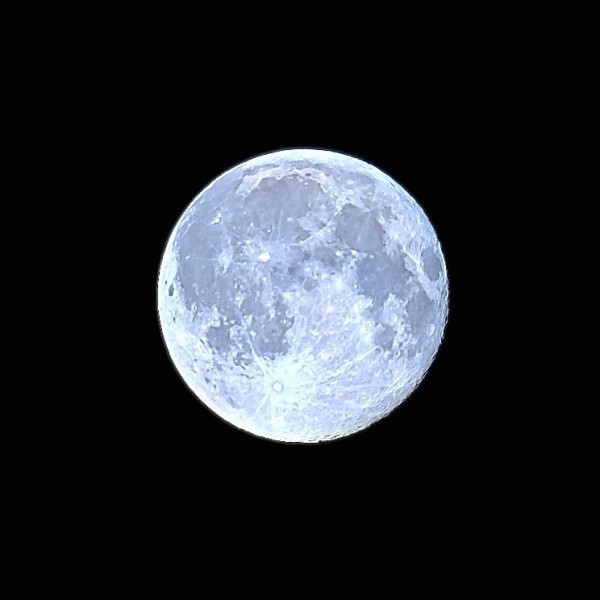
Photo at top by Elizabeth Crehan on the night of July 31, 2015. She said she added “a nice, quiet blue hue.”
Meteors ahead! Everything you need to know: Perseid meteor shower
This year, in 2015, the Blue Moon – the second of two full moons in one calendar month – falls on July 31, 2015. The precise instant of this full moon on July 31 was 10:43 UTC (6:43 a.m. EDT, 5:43 a.m. CDT, 4:43 a.m. MDT or 3:43 a.m. PDT on the morning of July 31).
How often do we have a Blue Moon? For the answer, you have to look to a concept from astronomy and calendar studies, at what’s called the Metonic cycle.
The Metonic cycle is a period of 19 calendar years (235 lunar months), after which the new and full moons return to the same (or nearly the same) dates of the year.
Therefore, 19 years from now, in 2034, we’ll again have another Blue Moon in July.
And 19 years after that, there will be another one, in July, 2053.

There are 235 full moons (235 lunar months) yet only 228 calendar months in the 19-year Metonic cycle. Because the number of full moons outnumber the number of calendar months, that means at least seven of these 228 calendar months must harbor two full moons (235 – 228 = 7 extra full moons).
However, if a February within this 19-year period has no full moon at all – as is the case in February, 2018 – that means this extra 8th full moon must fall into the lap of another calendar month, as well. Therefore, the year 2018 actually sports two Blue Moons, in January and March of 2018, giving us a total of 8 Blue-Moon months in the upcoming 19-year Metonic cycle:
1. January 31, 2018
2. March 31, 2018
3. October 31, 2020
4. August 31, 2023
5. May 31, 2026
6. December 31, 2028
7. September 30, 2031
8. July 31, 2034
Moreover, the Metonic cycle assures us that seven of 19 years will also feature a seasonal Blue Moon – third of four full moons in one season. Season is defined as the time period between a solstice and an equinox – or vice versa. The last Blue Moon by the seasonal definition happened on August 21, 2013. The next seven seasonal Blue Moons in the 19-year Metonic cycle:
1. May 21, 2016
2. May 18, 2019
3. August 22, 2021
4. August 19, 2024
5. May 20 2027
6. August 24, 2029
7. August 21, 2032
In short, we have a monthly Blue Moon whenever we have 13 full moons in one calendar year, and a seasonal Blue Moon whenever we have 13 full moons taking place in between successive December solstices.
Bottom line: The second of two July 2015 full moons falls today, on July 31, 2015. By popular acclaim, the second full moon to occur in a single calendar month is known as a blue moon. Thanks to what is called the Metonic cycle, 19 years from now, in 2034, we’ll again have another Blue Moon in July. And 19 years after that, there will be another one, in July, 2053.
Donate: Your support means the world to us
Enjoying EarthSky so far? Sign up for our free daily newsletter today!











